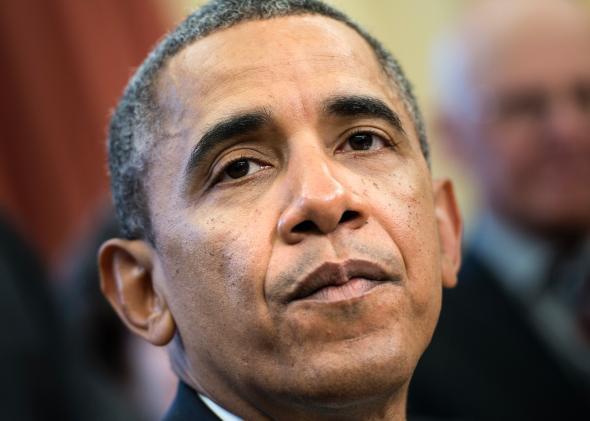Yesterday in Outward, Vanessa Vitiello wrote that President Barack Obama should not use his authority to bar LGBT discrimination among businesses that contract with the federal government. Reading her piece, I found myself scratching my head in disbelief. Here’s why.
First, she writes that an executive order barring federal contractors from engaging in discrimination on the basis of sexual orientation or gender identity is little more than “feel-good symbolism,” the practical benefits to workers being “pretty minor.” In reality, this executive order would protect roughly one-fifth of the entire labor force from LGBT discrimination and ensure that at least some workplaces in all 50 states have these protections in place. Considering that there are currently only 17 states with fully inclusive LGBT nondiscrimination laws, this certainly doesn’t sound like feel-good symbolism to me.
Second, Vitiello sets up a false choice between this executive order and the Employment Non-Discrimination Act, known as ENDA. She writes that while ENDA may be stalled in the House, the “ultimate goal [for advocates] is to pass legislation.” Here, she’s 50 percent right. Passage of ENDA remains vitally important, but if LGBT people are going to have comparable workplace nondiscrimination protections in place as currently exist for race and sex, we need both ENDA and the executive order.
In fact, workplace discrimination based on race and sex, as well as color, religion, and national origin, is currently barred by both a federal statute (Title VII of the Civil Rights Act of 1964) and Executive Order 11246, which has been in place since President Lyndon B. Johnson signed it on Sept. 24, 1965. This executive order, far from representing the “tyranny of kings,” prohibits almost all businesses that contract with the federal government—and thus receive taxpayer dollars—from engaging in workplace discrimination. Sexual orientation and gender identity remain notably absent from the list of explicitly protected categories. An LGBT nondiscrimination executive order would provide people with another avenue in the federal government—the Office of Federal Contract Compliance Programs within the Department of Labor—that they could turn to if they were the victim of employment discrimination by a federal contractor that would not be provided under ENDA.
Finally, Vitiello argues that a future administration, hostile to LGBT equality, will simply rescind the executive order. Here she cites the so-called Mexico City Policy (better known as the “Global Gag Rule”) as a “relevant precedent.” The Global Gag Rule, first imposed in 1984 by President Ronald Reagan, denies U.S. aid to foreign nongovernmental organizations that use their own funding—not funding given by the U.S. government—to advocate for safe and legal abortion care, to perform legal abortions in their own countries, or to counsel and refer women for abortions. Since it was first imposed, it has been lifted by administrations that support access to abortion care and reimposed by administrations that do not. It is puzzling that Vitiello cites the Global Gag Rule as a relevant precedent but never once mentions Executive Order 11246, which has been in place since 1965 and been enforced by every administration—Democratic and Republican—since.
The simple fact remains that this executive order, barring businesses that contract with the federal government from discriminating on the basis of sexual orientation and gender identity, represents the single most important step that President Obama can take on his own over the course of his entire second term to eradicate LGBT discrimination from America’s workplaces.
